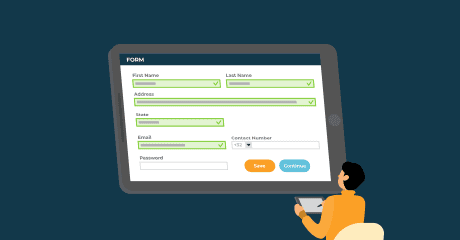Let’s talk shop! Why the retail industry is shining in the digital era
Who doesn’t love a bit of retail therapy! Browsing shiny new potential purchases, researching and comparing gadgets, ignoring the price tag for a few minutes while you imagine wearing the latest fashions, we’ve all done it and we all indulge in it on a more or less regular basis! The retail industry is booming 💥
Technological revolutions and shifts in consumer behaviour aren’t the only factors that have drastically changed the retail industry in the past few years. The COVID-19 pandemic in 2020-21 also had a seismic impact on the sector, skyrocketing online sales and giving consumers an even broader range of shopping options to choose from. Customer intelligence and new data privacy regulations are also having a significant impact on the industry, with the need for data-centric solutions becoming key for retail brands who want to stand out from the competition in a highly competitive landscape.
In this article we’ll be taking a closer look at how actors in the retail industry are coping with these fast-paced changes, the solutions and innovations that they’re implementing to thrive, and how combining first-party and zero-party data collection with interactive marketing and gamification is the way forward.
Read on to better understand the trends that are shaping the retail industry and helping it to shine in the digital era.
Shop till you drop! The trends shaping the retail industry
Personalisation with first- and zero-party data
Google announced a couple of years ago that they would no longer be supporting third-party cookies on their browsers from the end of 2022. The deadline has since been moved a couple of times, and currently stands at the end of 2024. From then on, we’ll be in a cookieless world. This announcement initially sent shockwaves through the digital ecosphere and companies who have always relied on cookies to gain audience insights were faced with a colossal challenge: how can they talk to and get to know their audience without third-party data?
There now looks to be a clear front-runner in the race to find alternative solutions to third-party cookies: collecting and harnessing the power of first- and zero-party data.
💡Curious to find out more about first-party and zero-party data? Then make sure you check out our blog articles with everything you need to know!

One of the main advantages of collecting and using first- and zero-party data when shaping a retail experience is personalisation and the possibility of offering consumers a personalised brand experience. Customer data is the basis for delivering digital customer experiences, via email, online and with marketing automation.
This marketing trend has experienced impressive growth over the past few years, with Mapp reporting that in 2022 in the UK, over 50% of ecommerce businesses offer their customers a personalised experience, up from 33% in 2020. The arrival on the retail market of large scale retailers, such as Amazon, means that consumers have come to expect a five-star shopping experience, thanks partly to personalisation. The best type of personalisation is when a brand includes the customer in the conversation and creates a genuine 1-to-1 experience.
Personalisation can be used both in email marketing and direct marketing but also across all digital channels, with website pop-ups, overlays and product recommendations.
When it comes to such design elements, make sure to use laptop mockups and test various design ideas for your website so that you can pick the best one.
Modern retail customers like to be made to feel special, they like to know that the brands they love and trust are listening to them and understand what they’re looking for. So personalisation is crucial in a crowded market for brands to keep up with competition and even better, to stand out.
The advantages of personalisation are plentiful in the retail industry:
👍 Giving consumers what they want: 71% of consumers expect personalisation.
💹 Increased revenue: 80% of companies report a growth since implementing personalisation.
🔥 Significant boost to profitability: personalisation multiplies selling opportunities and, most importantly, keeps customers returning.
⭐️ Improved brand reputation: if brands can show that they understand what their audience wants and expects, by providing them with a personalised experience, this will endear them to a brand in the long-term.
❤️ A more meaningful relationship with their audience: it’s estimated that consumers see on average between 4000 and 10,000 adverts EACH DAY and notice less than a hundred of those, registering only a handful. So brands need to stand out to their consumers and cut through the noise, not by being louder but by being more relevant.
But it’s not all plain sailing, as personalisation is actually one of the hardest marketing tricks to pull out of the bag. Only 1 in 5 retailers judge themselves to be ‘very good’ at personalisation. Why is that? Personalisation is a complex matter that isn’t as simple as it can seem at first glance. Brands need a data tool in place, such as a CDP, that can unify all of their data points and analyse their customer data effectively. A 360° customer view is needed, with accurate, real-time data from multiple sources, including but not limited to historical, behavioural and demographic data.
The first- and zero-party data that is needed to carry out effective personalisation is often already present in brands’ systems, but harnessing the full power of it requires a technological stack and a data collection strategy that are well organised and coordinated, with no silos or breaks. Not all retailers are able to leverage their customer data and insights in order to implement the necessary changes in their system.
In today’s busy and highly-competitive retail industry, for both online and offline retailers, offering a personalised customer experience has become a strategic and competitive differentiator. So while the advantages are clear, the execution and implementation aren’t always straightforward. But one thing is sure: first- and zero-party data aren’t going anywhere, and they’re the key to successful personalisation.
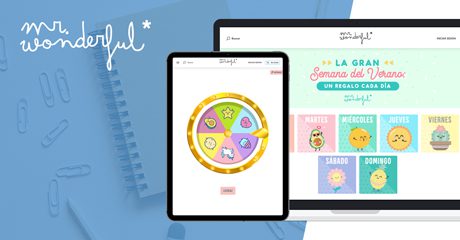
Positivity and interactivity is the name of the game for Mr Wonderful 🤩! The Spanish stationary brand started as an online shop, and they now have over 50 flagship stores and thousands of points of sale. Curious to find out more about their marketing and data collection strategy?
Boost customer engagement in the retail industry
One element that is becoming increasingly apparent to a lot of retailers is that the customer needs to be at the heart of the industry. Retail brands need to be moving towards a customer-centric model, based on data and analytics, where they’re engaging with their customers, with the right content on the right channels. By doing so, they’ll be establishing a relationship that is based on trust and a value exchange.
As explained by Seth Godin:
“The internet is about building connections. Effective marketers aren’t yelling at people, they’re giving their fans something to talk about. Unfortunately, that idea is lost on retailers who try to be everything to their customers. Somebody will always be bigger or cheaper than you, so the only real alternative is to offer a specific experience based on status and affiliation that people will really want to tell others about. That’s where you build true connections.”
It is a well-known business fact that it “costs more to create a new customer than to keep an old one”. By engaging with their audience and providing them with the most relevant content, brands can drive online and offline sales from new and existing customers, encourage repeat purchases and grow customer loyalty. Focusing on customer retention and lifetime value will also mean that they’re investing in the experience they’re offering customers and building a community that consumers will want to keep returning to.
Customer data once again plays a key role in enabling brands to engage with their customers so there is a need across the industry for a more holistic approach to data. It needs to be people-centric to create a simple and streamlined shopping experience. Website data can be activated and enriched to combine demographic, transactional and behavioural data with customer intelligence from multiple data points and sources, thus creating a 360° customer view.
In order to offer a truly personalised and omnichannel shopping experience, retailers need to start by understanding their customers needs and expectations. And this can be achieved by asking the right questions and building accurate and up-to-date customer profiles. End-to-end engagement throughout the customer journey will mean that they’re able to offer their audience the most relevant and appropriate products, services and promotions.

Retail media
The retail media market in America is booming and that trend is fast spreading to Europe and Latin America. It’s the fastest growing channel for media spend, is revolutionising media hierarchies and is expected within the next 3 years to overtake TV advertising spend for US consumer packaged goods companies. Retail media is fast gaining traction across Europe and the market is expected to exceed €5 billion by 2026, according to IAB.
But what is it? Generally speaking, retail media is advertising within retailer sites and apps. Thanks to this medium, brands can boost their visibility on the “digital shelf”.
Definition: Retail media is a form of advertising intended to capture consumers’ attention when they’re nearly ready to buy – at or near the point on the path to purchase when they make a selection from among competing brands and products.
The concept of retail media isn’t new, but it’s been reimagined for the digital age. Online, it translates as digital ads on e-commerce sites and apps, to boost the visibility of products to relevant audiences.
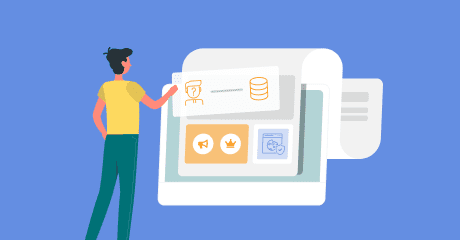
One of the best examples of retail media is the recent joint venture announced between the French supermarket chain, Carrefour Group, and the 3rd largest communications group in the world, Publicis. They are leveraging their leadership positions in their respective markets to bring to Europe and Latin America the same scale and connectivity that is enabling the retail media boom in the US.
This new venture aims to build a comprehensive media player that spans technology for inventory creation and data sharing for merchants, to the full commercialisation of media and data solutions for advertisers, backed directly by merchant transactions. The joint venture is expected to start operations in the first half of 2023.
When the partnership was announced, Alexandre Bompard, Chairman and CEO of Carrefour Group, declared:
We understood very early on that our data had tremendous value potential. We were one of the first retailers to launch retail media. Last year, we accelerated by creating Carrefour Links. Today, we want to go further and beyond the limits of our current model. We are going to create an alliance with an industry expert, the Publicis Groupe, to change three things: first, we will put tech at the heart of our model, second, we will go up in the value chain, by creating retail media solutions by ourselves, and third, we will conquer new markets, both in continental Europe and in Brazil. With this alliance, our digital transformation takes on a new dimension and allows us to access a new market with tremendous growth.”
Building a sense of community and loyalty
It’s no secret that satisfied customers are more likely to return to your brand for a future purchase and to recommend you positively to their friends and family. Making their shopping with you an “experience” by producing a “wow” effect, should therefore be a key priority. Turn your customers into your fans!
Building a community from an audience has in recent years become a priority for many retail brands, as they look to increase brand awareness and customer retention.
A community will unite around 3 central elements:
🫶 A shared identity
🤝 Rituals and traditions
🫂 A sense of responsibility to serve one another
Curious to find out more about how building a sense of community of loyalty amongst your customers can improve their brand experience?
> Take a look at the amazing loyalty program created by our fictional FMCG brand Flavorsome! You can even try it out 🤩
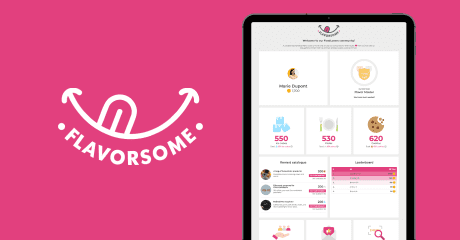
Just like building a strong brand identity, setting up a strong brand community doesn’t happen overnight or by accident. It takes a significant commitment of time and resources over a certain period of time. In order to establish a sense of community amongst their audience, brands need to learn about their customers and build a relationship with them. Once again our friends first- and zero-party data make an appearance here: analyse and use the data you’ve collected from your audience and show them that you care, that you’re listening and that their feedback is heard. This can be done by personalising your marketing messages and providing them with the content that they want and need. Or by using customer feedback to inform innovations and new products or to improve customer experience.
In a highly privacy-conscious world, consumers sharing their data is closely linked with trust, as we found out in this article, where we established that a value exchange is key when collecting data from customers. This means that an increasing number of brands are willing to invest in loyalty programs and initiatives as they can improve this trust relationship and in turn provide a goldmine of customer data.
A common misconception is that it’s easier to create a sense of community in a physical store, as you’re effectively setting up community-focused spaces and memorable in-store experiences. Building a community online is easier than it might initially seem, it requires using first- and zero-party data to its full potential and offering the user a value exchange.
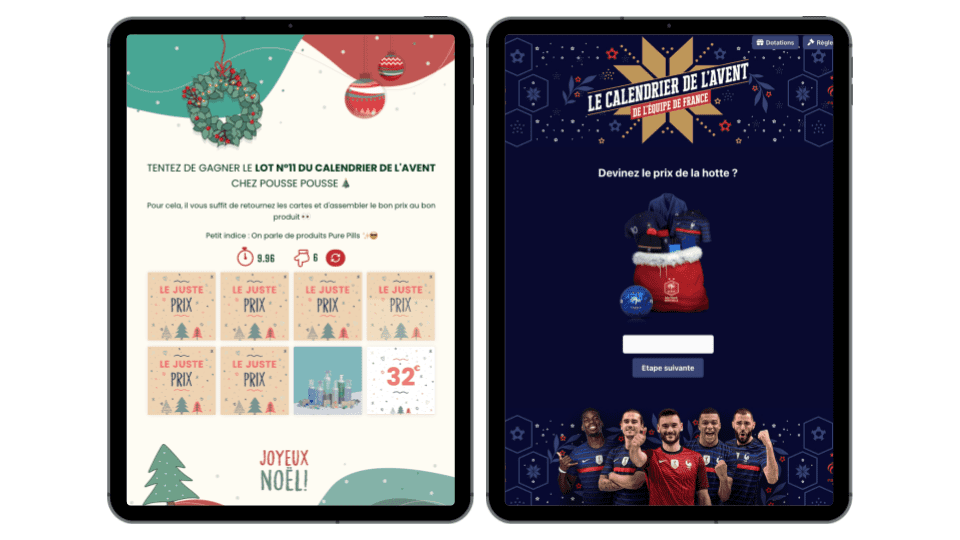
The perfect way of doing this is with interactive marketing formats, such as quizzes, polls, contests and games. By giving consumers something in exchange for their data, like rewards, prizes or special offers, they’re more likely to keep returning to a brand.
Nowadays, with new consumer behaviours and expectations, loyalty programs also need to evolve. There needs to be a shift in mentality towards retention, and the way to do that is by setting up loyalty programs that go beyond purchases and that are based on interactions. So rather than only rewarding your customers for their commercial relationship with you, you’re rewarding them for being a part of your community. By gating your online community with loyalty programs, you’re giving them an exclusive feeling, and the sense of belonging to something special.
Curious to find out more about how you can create interaction-based loyalty programs with Qualifio Loyalty? Right this way!
It’s all gone digital in the retail industry
The technological advances that have been made in the past decade have revolutionised many aspects of our lives, and particularly the innovations made in digital technology. All industries and sectors have been impacted by this progress, and retailers and ecommerce sites are no exception.
In 2012, when Amazon launched, some thought it would bring the end of traditional retail and shops. 10 years later, the industry has been through a revolution and has been profoundly changed, but it’s still standing, and is arguably stronger than ever.
The COVID-19 pandemic has also had a significant impact on the industry, as physical stores were closed and consumers worldwide could only do the majority of their shopping online. The pandemic gave online retail a booster effect and precipitated us into a new era of shopping that combines physical and digital stores. Online shopping has well and truly been adopted by customers across the globe since the beginning of the pandemic. So in order to be competitive, retailers today need to be taking the necessary steps to optimising their customer experience by offering both online and offline channels.

Another of the major shifts in consumer behaviour has been the explosion of the use of mobile phones in the past decade. These devices have fundamentally changed the way in which we live our lives and consequently how we shop. We now all have access to everything in our back pocket, in just a few clicks.
Considering all of this, it’s safe to say that there have been more changes in the retail industry in the past 2 years than in the past 2 decades, and there’s a lot more to come! Let’s take a look at a couple of these new technologies that are having a significant impact on the industry.
Social commerce
It’s reported that 97% of Gen Z use social media as their main source of shopping.
15 years ago, that sentence would have made no sense whatsoever, which goes to show just how much consumer behaviour has changed in recent years. Nowadays, nearly three-quarters of the world’s population over the age of 12 use social media! The pandemic also led to a boom in the amount of time consumers are spending scrolling their social media channels: an average of 15% of waking life for a typical social media user.
The ecommerce market is expected to triple by 2025 and social media has become one of the main parts of the customer journey. And the whole customer journey is migrating to social media platforms, from brand marketing to customer service and shoppable adverts and posts.
The scope of social commerce is wide and multifaceted, ranging from working with influencers, to livestreams, to video consultations, to personalised product recommendations and social ambassadors. Some of the best examples? Spotify and their “wrapped” campaigns, GoPro leveraging user-generated content to promote their products, and all brands who have made the most of Instagram’s shoppable posts.
What makes social media platforms the perfect vehicle for providing a unique customer experience? Their very nature: they’re flexible and in constant evolution, so they’re great for brands to be kept on their toes, having to always think about the next best way to engage their audience.
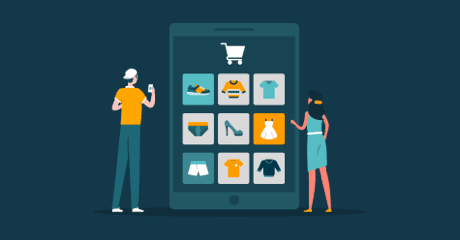
One of the most prominent trends emerging on social media in the past couple of years has been unlocked thanks to the advances in video formats: live commerce. Although whilst highly popular in Asia, this trend doesn’t have the same following in Europe and America due to the audience being more fragmented.
Video is a clear powerhouse when it comes to promoting retail experiences on social media, demonstrated by Instragram who have pivoted their USP away from being a photo sharing app to focusing on reels, their short video format. In doing so they’re looking to compete with Youtube and TikTok.
Having a retail presence on social media is also the perfect opportunity for brands to take back control of their image on digital platforms: they can harness and build brand equity and audience engagement in a way that just isn’t possible on traditional marketplaces.
Showrooming and webrooming
Another trend that has emerged in recent years is the concept of showrooming and webrooming. Shopify defines showrooming as “a trend in shopping behaviour where customers visit stores to touch and feel the products, but opt to purchase them online.”
This means that retailers can carry lower, or almost no, levels of inventory and stores become more of a showroom.
The advantages are clear:
💵 Big money savings
🛍 Ideal for attracting younger shoppers
🛒 Puts the focus on the shopping experience rather than the bottom line
😮💨 Removes choice paralysis and the pressure of making an immediate purchase
🫶 Focuses on building long-term relationships with customers
✅ Improves customer service as the retail workers in-store are true experts and consultants who can provide personalised advice
Webrooming is the opposite: the customer has researched the product online before going in-store for a final evaluation before making a purchase. This was a big hit during the pandemic as it reduced the time spent in-store and beat long delivery times and expensive shipping costs.
In their 2022 “The future of commerce trend report”, Shopify reported that 37% of consumers are frustrated by long delivery times and 23% are frustrated by extra shipping costs. With webrooming the consumer has the best of both worlds: they can shop from the comfort of their own home, receive the product immediately and both shipping costs and waiting time are eliminated.
Both practices are to be encouraged, they may seem like polar opposites but they actually balance each other out: 59% of buyers will look online then buy in-store and 54% will browse in-store first before purchasing online. So retailers need to cater for both types of buyers.
The potential for upsell and cross-sell is huge with both practices and they also provide retailers with invaluable customer data, and not only purchase data, but preferences and buying intent too. A multichannel approach to a brand’s relationship with their audience is therefore key: across all channels, both physical and digital, engage with customers by providing them with personalised services and experiences, and ask for feedback and opinions in exchange.
How Qualifio can help
Qualifio is Europe’s leading first- and zero-party data collection platform, used by major brands in the retail industry for over a decade to answer some of their biggest challenges:
🕹 Bringing more interactivity and virality to their content, both in-store and online.
👥 Getting to know their audience better and segmenting their database.
🛍️ Bridging the gap between physical and digital stores.
📲 Increasing the traffic on their ecommerce channels and footfall in their brick-and-mortar stores.
❤️ Increasing their engagement with their audience and building more meaningful relationships with them.
We’ve seen so many highly innovative and creative ways in which actors from the retail industry have used our interactive formats in Qualifio Engage, to achieve a whole range of their marketing goals. Some have wanted to spice up their content with polls and votes about new products or ranges; others have wanted to entertain and engage with their audience in new and innovative ways, with competitions and quizzes with amazing prizes to be won; some have wanted to increase their social media following with games and user-generated content; and others have wanted to increase their number of newsletter opt-ins, with forms and personalised communication. And we can’t forget those who have wanted to get their online customers to shop in-store and vice-versa, thanks to couponing and special offers with all sorts of interactive formats.
🤓 You can read about more of these inspiring examples here.
Belgian fashion retailer LolaLiza have placed the customer journey at the heart of their marketing strategy and have adopted a ‘continuous communication’ strategy to focus on their customer experience. They’ve set themselves an ambitious goal: to deliver a different game every month, with rewards tailored to their target audience.







